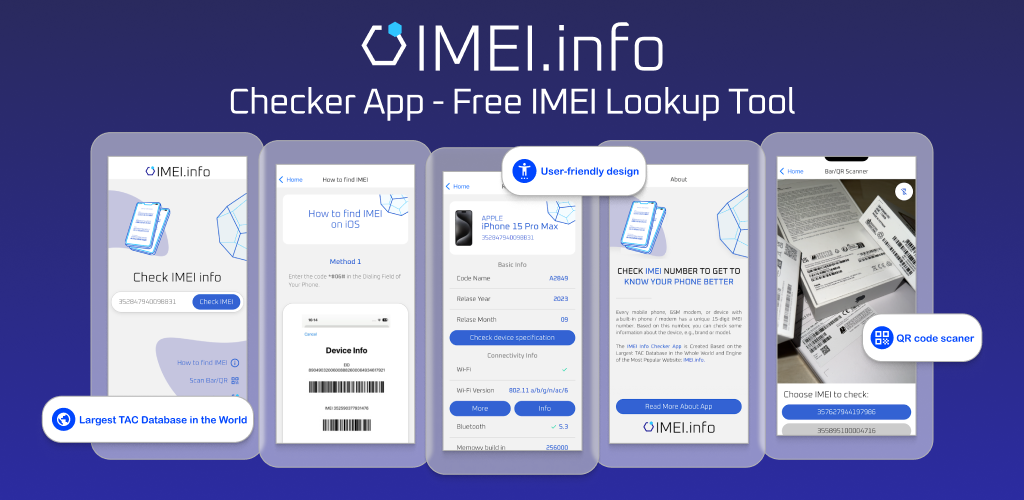In the world of manufacturing, you're bound to come across the term 'injection molding machine.' It's a piece of equipment that plays an indispensable role in creating a myriad of products we use every day. From plastic bottle caps and automotive parts to toys, medical devices, and more, this remarkable machine is behind them all.
An injection molding machine is essentially a complex system designed to mold materials into specific shapes by injecting them under high pressure into a mold cavity. The process begins with feeding plastic granules into a hopper. Once inside, they're heated until they reach a molten state. This molten plastic is then injected at high speed into the mold cavity where it cools and solidifies into the desired shape.
Understanding how an injection molding machine works not only underscores its importance in modern manufacturing but also highlights the intricate processes involved in producing everyday items. It's fascinating how such complex objects can be created from raw materials with just heat and pressure! So next time you look at your toothbrush or water bottle cap, take a moment to appreciate the marvel of engineering that brought it life: the injection molding machine.
Understanding Injection Molding Machines
So, you're curious about injection molding machines? Well, let's delve into it. Essentially, these are the industrial giants behind many of the plastic products you use daily. From your toothbrush handle to complex components in your car, they owe their existence to an injection molding machine.
Just imagine a really big syringe. That's what an injection molding machine is like at its core. It takes in raw plastic pellets, heats them until they melt, and then injects the molten material into a mold under high pressure. The plastic cools and solidifies within this mold, taking on its shape before being ejected as a finished product.
Now, that might sound simple enough but there's more than meets the eye here. See, these machines come in different types and sizes depending on what you need to manufacture. Some are designed for low-volume production of intricate parts while others can churn out thousands of simpler items per hour.
To give you some perspective:
- The 'clamping force', which affects how big a part can be made and how much detail it holds varies greatly among machines.
- A smaller benchtop model could have clamping force around 5 tons.
- On the other hand, larger industrial models can exert over 6000 tons!
But don't get too bogged down by these numbers yet! Here's something to remember: Understanding exactly how an injection molding machine works requires delving deeper into its key components – namely:
- The Hopper: This is where those raw plastic pellets start their journey.
- The Barrel: Equipped with heaters to melt down the pellets.
- The Nozzle: Where hot molten plastic gets injected into mold under pressure.
- And finally...The Mold Cavity: This is where magic happens! As cool-down process starts here.
That wraps up our basic primer on understanding injection molding machines. In our next section we'll dive deeper into each of these components, so stick around if you're interested in uncovering more about this fascinating process!
Key Components of an Injection Molding Machine
Peering into the world of injection molding machines, you'll quickly realize that they're a complex blend of numerous components. Each component plays a critical role in making these machines the manufacturing powerhouses they are today. Let's break down some of the key pieces that make up an injection molding machine.
Your first encounter is with the Injection System. This is where it all begins. Comprised mainly of a hopper, a barrel, and a reciprocating screw, this system heats and melts down plastic resin pellets until they reach their molten state. The reciprocating screw then forces this molten plastic into the mold cavity.
Next up, we have the Clamping Unit. It's here that your product takes shape! The clamping unit holds and closes the molds under pressure to withstand the injection force from the injection system. Once filled with molten plastic, it keeps them shut till cooling solidifies them into your desired part or product.
The Hydraulic System, though often unsung, is as vital as any other component in an injection molding machine. It powers both movements - opening and closing -of your clamping unit while also driving forward and drawing back your reciprocating screw in the injection system.
Now let's talk about control systems: enter Electrical Controls. These systems govern everything from temperature regulation within your barrel to pressure control during clamping and mold protection – ensuring precision throughout each cycle.
Lastly but far from least important are Molds themselves: tooling designed specifically for each individual part or product you're producing on your machine.
- Injection System
- Clamping Unit
- Hydraulic System
- Electrical Controls
- Molds
Each component comes together to create a seamless production process which underpins industries worldwide! From automotive parts to everyday household items - chances are if it's made out of plastic, it's come from an injection molding machine.
How Does an Injection Molding Machine Work?
Ever wondered how the small plastic pieces of your phone cover or children's toys are made? The answer is injection molding machines. Let's take a deep dive into its process.
You'll find that the operation of an injection molding machine is fairly straightforward, yet incredibly intricate. The first step involves feeding plastic granules into a heated barrel through a hopper. This is where it gets interesting - as they're pushed along by a rotating screw, they gradually melt to form molten plastic.
When this molten plastic reaches the desired state, it's then forced under high pressure into a metal mold cavity formed in the shape of the desired product - be it your phone cover or toy car wheels. Pressure is applied and held until the plastic cools down and hardens to match the mold.
As soon as this happens, voila! The mold opens and ejects out your fully formed product, ready for any finishing touches if necessary. This cycle repeats itself again and again; hence its classification as a cyclical manufacturing process.
To give you more perspective on how popular this method truly is: According to market research data from Grand View Research, in 2020 alone, over 100 million tons of plastics were produced using injection molding machines worldwide!
Table: Global Plastic Production via Injection Molding
| Year | Tons Produced |
| 2020 | 100+ million |
Bear in mind that these machines can range vastly in size and complexity depending on their intended usage. From simple manual desktop models used for producing small items like bottle caps to massive industrial ones churning out large components like automotive parts - there's an injection molding machine for just about anything!
Types of Plastic Used in Injection Molding Machines
You might be asking yourself, "What types of plastic can I use in an injection molding machine?" Well, you're not alone. There are a variety of plastics suitable for this process. Let's dig a little deeper into some common ones.
First on our list is Polyethylene (PE). It's the most commonly used plastic worldwide and it comes in different densities. High-Density Polyethylene (HDPE) offers greater rigidity - perfect when you need sturdy components. On the other hand, Low-Density Polyethylene (LDPE), while softer and more flexible, is great for making items like squeezable bottles or tubing.
Next up we have Polypropylene (PP). PP boasts resistance to chemicals and heat, which makes it ideal for items that will be exposed to hot liquids or corrosive substances. Consider it when manufacturing things like dishwasher-safe food containers or automotive parts.
Then there's Polystyrene (PS), available as either General Purpose Polystyrene(GPPS) – a rigid type or High Impact Polystyrene(HIPS) – a more resilient version. You'd typically find PS in products like disposable cutlery, CD cases, or even model assembly kits.
We also can't forget about Acrylonitrile Butadiene Styrene(ABS). ABS combines the best attributes of its three components resulting in a hard yet slightly rubbery material. Its versatility has made it popular for applications ranging from protective housings to Lego bricks!
Lastly, let's talk about Polyvinyl Chloride(PVC). You'll find PVC mainly in construction due to its durability and cost-effectiveness but it’s also found elsewhere - think credit cards and vinyl records!
Each type of plastic comes with its own unique properties that make them better suited for certain applications over others:
| Plastic Type | Properties | Common Uses |
| Polyethylene (PE) | High durability, flexibility or rigidity depending on density | Bottles, tubing |
| Polypropylene (PP) | Chemical and heat resistant | Food containers, automotive parts |
| Polystyrene (PS) | Rigid or resilient depending on type | Disposable cutlery, CD cases |
| Acrylonitrile Butadiene Styrene(ABS) | Hard yet slightly rubbery material | Protective housings, Lego bricks |
| Polyvinyl Chloride(PVC) | Durable and cost-effective | Construction materials, credit cards |
Remember, choosing the right lastic for your injection molding project is vital. It can make all the difference in the final product's quality and functionality.
Common Uses for Injection Molding Machines
One of the most prominent uses of injection molding machines is in the automotive industry. You see, car parts like bumpers, dashboards, and even smaller components are often crafted using these nifty machines. It's a method that allows manufacturers to produce high volumes of identical plastic parts with precision and efficiency.
You're also likely to find injection molding machines hard at work within the consumer goods industry. Things you use every day - think toothbrushes, storage containers, or toys - they all start their journey in an injection mold. The machine's ability to churn out large quantities quickly makes it an ideal solution for mass-produced items.
Medical equipment manufacturing is another field where these machines are indispensable. They're used to create components for devices such as syringes, implants, and surgical instruments. Given the critical nature of these products, injection molding offers a level of accuracy that's absolutely vital.
Beyond these applications, there's also a wide range of industries that rely on injection molding machines for their production needs:
- Electronics: Casings for phones and laptops
- Construction: Plastic pipes and fittings
- Packaging: Bottle caps and food containers
The list goes on! What ties all these uses together is the need for consistent quality and high-volume production - something that injection molding machines excel at delivering.
Advantages and Disadvantages of Using an Injection Molding Machine
Starting with the upside, injection molding machines are highly efficient. Once the initial setup is handled, you'll find that these machines can produce large quantities of identical products in a short amount of time. This high production rate makes it an excellent choice for mass-producing goods.
- High Efficiency
- Excellent for Mass Production
A second advantage to note is its ability to deliver detailed and complex shapes. With other types of manufacturing processes, you might struggle to achieve intricate designs. However, injection molding machines offer a high level of precision.
- Delivers Complex Shapes
- Offers High Precision
On top of all this, there's minimal waste produced by an injection molding machine. Since every single bit of plastic can be reused in the next cycle, it's considered environmentally friendly.
- Environmentally Friendly
- Minimal Waste Produced
But like any other machine, it's not all sunshine and rainbows with injection molding machines. One major disadvantage is the high initial cost involved in setting up these machines. They require a significant investment which might not be feasible for small businesses or startups.
- High Initial Cost
- Not Feasible for Small Businesses
Another drawback lies in its limited material options as only thermoplastic and thermosetting polymers can be used in this process. Finally, even though they churn out identical items efficiently, changes to design or color during production aren't easy tasks and usually result in increased costs.
- Limited Material Options
- Design Changes Result in Increased Costs
Industry Standards and Safety Measures for Injection Molding Machines
In the realm of injection molding, maintaining high industry standards and adhering to safety measures is a non-negotiable. It's not just about ensuring productivity but also about safeguarding the well-being of your workforce.
A key component of these standards is the ANSI/SPI B151.1-1997 standard. This guideline, set by the American National Standards Institute and the Society of the Plastics Industry, outlines specific requirements for the manufacture, care, and use of injection molding machines. For example:
- Ensuring that all machine guards are in place and functioning correctly.
- Verifying that operators have received proper training.
- Making sure emergency stop buttons are easily accessible.
To elaborate further on operator training, this isn't something to be taken lightly. Your team needs comprehensive instruction on everything from machine operation to recognizing potential hazards. What's more? Regular refresher courses should be part of your program as well.
On top of industry standards, you'll find a slew of additional safety measures recommended by OSHA (Occupational Safety and Health Administration). These include:
- Conducting regular inspections to detect any faults or malfunctions early.
- Implementing lockout/tagout procedures during maintenance work.
- Using personal protective equipment like gloves and safety glasses.
Clearly, there's no shortage of rules when it comes to operating injection molding machines safely. But remember: these aren't merely regulations - they're crucial steps towards creating a secure work environment where your staff can thrive without fear for their safety.
So whether you're an industry veteran or just starting out in injection molding - don't underestimate the importance of following these guidelines religiously! After all, nothing trumps human safety in any manufacturing process – including injection molding!
Conclusion: The Impact of Injection Molding Machines on Manufacturing
You've journeyed through the intricate details of injection molding machines, their operations and applications. Now, let's delve into how they have revolutionized the manufacturing industry.
The impact is undeniable. Injection molding machines have become an essential part of modern manufacturing. They offer unparalleled speed and efficiency, making it possible to produce large volumes of high-quality products in less time than ever before.
Here are some key benefits:
- Increased productivity: With injection molding machines, you can create thousands of parts per hour.
- Cost-effectiveness: Once your mold is created, you can use it over and over again to manufacture identical parts at a low cost.
- Versatility: From tiny components for medical devices to large car parts - these machines cater to a wide variety of industries.
A quick glance at the data reveals just how significant this technology is in today's world:
| Industry | Number of Parts Produced Annually (in billions) |
| Automotive | 100 |
| Medical | 200 |
| Consumer Goods | 500 |
That's nearly a trillion units produced every year using these precise, efficient machines!
So, next time you marvel at complex plastic products or appreciate their affordability, remember the impressive machinery behind them. It's thanks to injection molding machines that we're able to enjoy such diversity and quality in our everyday items.

Guide to Installing Android Apps on PC: Emulators and Alternatives
If not, at least you will be able to come across an amazing Android app that can't be had on a PC, or perhaps an app will be liked and the best from the increased performance and space display that the computer offers. Running apps on your PC allows you to enjoy the bit advantage of a number of things: boosting productivity, gaming pleasures, or even exploring new applications on an expanded environment.

The Importance of Branding in Web Design
Branding plays a pivotal role in shaping a company's identity and fostering connections with its audience in today's digital age. As businesses vie for attention in a crowded online marketplace, the role of web design in conveying a brand's essence and values has become increasingly significant.

Mastering the Art of Audio Upmixing
UniFab Audio Upmix AI is revolutionizing the way audio production is approached in various industries. By utilizing cutting-edge artificial intelligence technology, UniFab Audio Upmix AI offers a unique and innovative solution for upmixing audio content to deliver superior sound quality.

Revolution on the Used Device Market: How Automation is Leading the Way
The main trend in the used device market is automation. All processes that are done manually have one common drawback: human errors.

How many eSIMs can be used in iPhone?
Are you looking to streamline your mobile experience with an eSIM for your iPhone? The advent of eSIM technology has revolutionized the way we connect, allowing for a more seamless and efficient use of our devices. With an eSIM iPhone, you can forget about the hassle of physical SIM cards and enjoy the benefits of multiple network plans on a single device. But how many eSIMs can an iPhone support? And how do you go about adding an eSIM to your iPhone? In this article, we'll dive into the ins and outs of eSIM capabilities on your SIM iPhone, providing you with a step-by-step guide to getting set up. Keep reading to unlock the full potential of your iPhone with eSIM technology and learn how to enhance your connectivity with ease.

IMEI Info Checker App
The awaited moment has arrived! After a period of anticipation, we take immense pride in announcing the launch of the IMEI Info Checker App, marking a pivotal moment in accessing concealed mobile device information. In today's digitally intertwined landscape, understanding your device's nuances is pivotal. This long-awaited unveiling undoubtedly simplifies access to concealed information about any mobile device. Soon available on the App Store for iOS and the Play Store for Android, this app promises a transformative shift in how users interact with their device data.

iPhone GSX Check
Are you seeking essential details about your iPhone's carrier network, warranty status, and other critical information? The iPhone GSX Check provides comprehensive insights into various aspects like simlock network, Find My iPhone status, warranty info, and more.

eSIM Quick Transfer - All You Need to Know
In the ever-evolving landscape of smartphone technology, eSIM (embedded SIM) has emerged as a game-changer, offering greater flexibility and convenience for users. One of the latest innovations in this realm is the eSIM Quick Transfer feature, which streamlines the process of transferring eSIM profiles between devices. Whether you're an iPhone aficionado or an Android enthusiast, understanding the ins and outs of eSIM Quick Transfer is essential for maximizing the potential of your mobile experience.



















